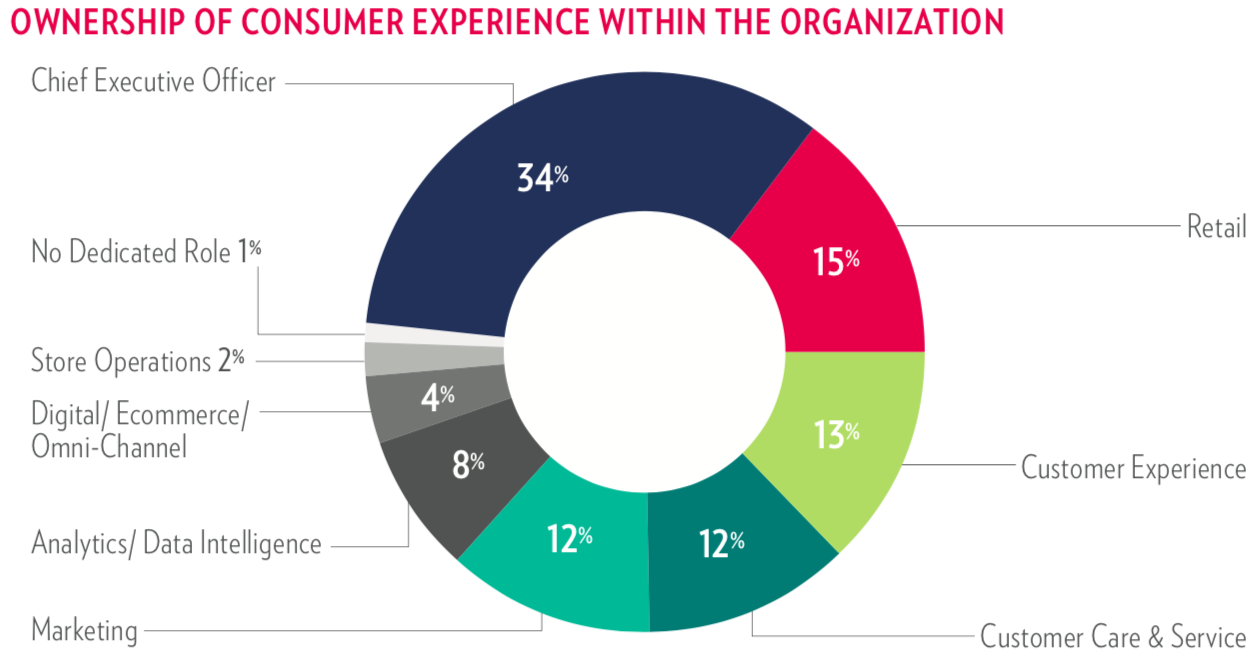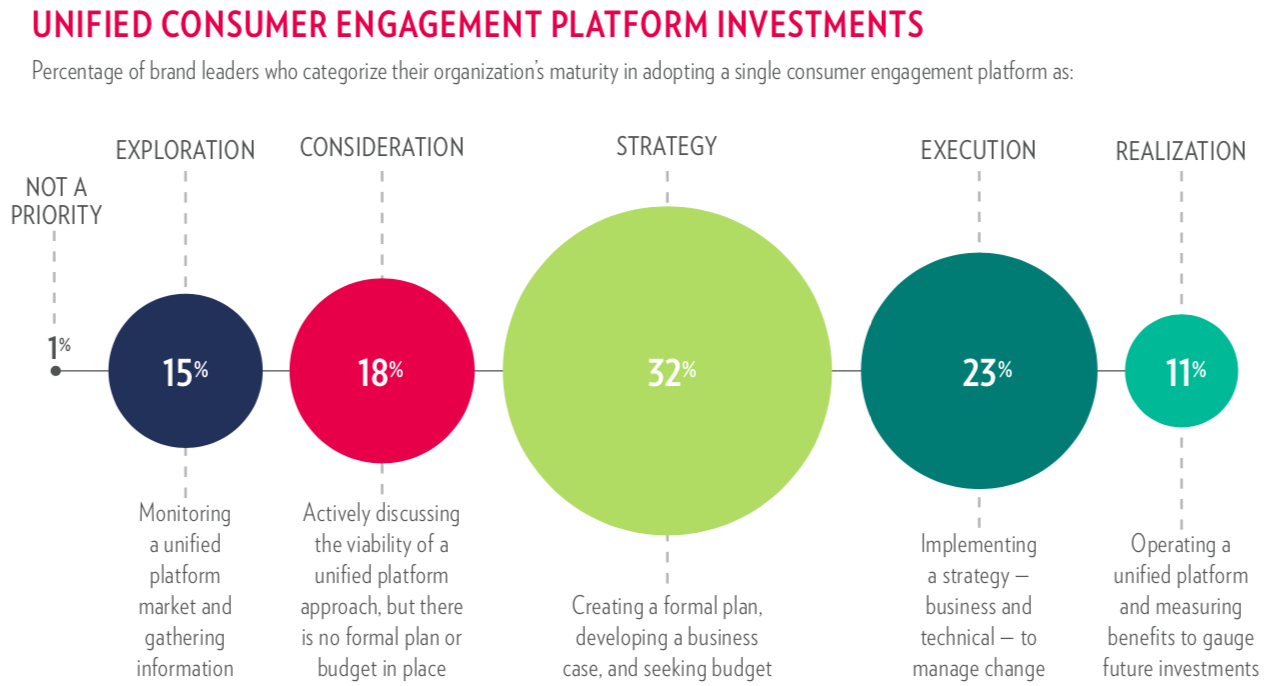
Get your FREE 30-day trial.
Please complete all fields.
If there’s anything we’ve learned from years of doom-and-gloom retail headlines, it’s that shoppers are in complete control — and if brands don’t offer an exceptional experience that drives repeat visits and purchases, it’s easier than ever for shoppers to find a brand that will.
That said, the next major milestone in retail’s evolution will be brands’ expansion from unified commerce to a more holistic, unified consumer engagement strategy.
In a new research report, Consumer Experience in the Retail Renaissance, we surveyed more than 550 traditional retail, pure play, consumer goods, and branded manufacturing leaders about their approach to consumer experience. The report found that most brand leaders pay lip service to prioritizing consumer experience, but not due attention.
The consumer experience shift means it’s time to unify consumer engagement around your actual consumers.
By unify, we mean centralize consumer data, channels, and touchpoints for a single view of every shopper. According to our research, brand leaders manage an average of 39 disparate systems for customer engagement. Unifying is about decreasing those systems and silos to provide a more cohesive and consistent brand experience, wherever a consumer chooses to engage.
We don’t underestimate the organizational and technological challenges in unifying customer engagement, but here are seven reasons why it’s high time for brands to start down the path:
1. Consumer expectations grow every day.
Thanks to the proliferation of phones and ubiquitous connectivity, consumer expectations for speed and convenience have reached new heights. Ten years ago, a five-minute wait in a department store checkout line would’ve been easily overlooked. But in today’s climate of one-click ordering and instant click-to-chat customer service, that wait would be unacceptable. Unified engagement transforms everyday touchpoints into memorable moments by addressing shopper pain points on every channel — not solely ecommerce or marketing, but the holistic journey.
2. Competition is a moving target.
The days of competing with a few other stores in your neighborhood, or similar brands on the shelf are over. A recent article in Business of Fashion noted that “consumers no longer compare their experiences vertically within a given category. The tendency by incumbents to measure their success relative to competitors within the same vertical creates gaping blind spots that leave the door open to disruptors.”
Today, brands race against literally thousands of competitors, including behemoth marketplaces, nimble pure plays, and new business models like subscription services, for every sale. And don’t forget about Amazon and Walmart’s seemingly unlimited resources to attract and retain consumers across myriad categories. Competition may be a moving target, but unified engagement is a sure bet, no matter where channels and preferences go.
3. With more data comes more responsibility.
Today’s consumers are hyper-aware of the risks involved when they share data with brands. Every time a consumer shares data with you, it’s an opportunity to reduce friction from their experience and create a more personalized journey. That doesn’t mean creepy — it means more convenient, and more relevant. And it’s only possible when disparate data points are connected back to every individual shopper.
4. Department leaders are often siloed — leading to siloed and disconnected experiences.
Brand leaders don’t have a common blueprint on who owns the consumer experience. According to our survey, no clear role or department owns this all-important strategy and execution. Results ranged from 34% for the CEO to 12% for customer care and service to 8% for analytics/data intelligence. Consumer experience success relies on unified accountability, alignment, communication, and data management.

5. The promise of AI rests on unified data.
Brand leaders plan to hire 50% more data scientists in the next three years, and the promise of AI looms large. But brands must prioritize accessibility of consumer data across departments if they want AI to bring value. By unifying data and learning about consumers through their complete, end-to-end profiles, brands’ investments in AI will pay off in major dividends. Check out this Q&A with Salesforce Commerce Cloud VP of Data Science Rama Ramakrishnan, where he opines that, “data that you don’t act on is as useless as data you never saw in the first place.”
6. The more systems brands use, the more opportunities arise for disjointed experiences.
With 39 systems used, on average, to manage engagement, it’s no wonder experiences feel so disjointed from a shopper’s perspective. One obvious example: why can’t customer service representatives have insight into shoppers’ purchase history? As brands have embraced digital capabilities, every team seems to be working from a different toolkit, depending where they sit in the company. But every employee serves the same consumer. Unifying systems and touchpoints puts a stopper in this increasingly untenable technological ecosystem.
7. It’s what the top-performing brands are doing.
In our survey of 550 brand leaders, elite performers were overwhelmingly most likely to adopt a unified engagement strategy: Elite performers were 3.2x more likely than underperformers to be executing a strategy for a single, unified consumer engagement platform. We define elite performers as brands whose revenue increased more than 10% in the past fiscal year, while underperformers’ total revenue has stayed the same or decreased during the same period.
Overall, two of survey respondents currently have an active and funded initiative in play. To emulate the elite performers, follow their path to unified consumer engagement.

For a deeper dive on the present and future of consumer experience, download the new report from Salesforce and Deloitte.